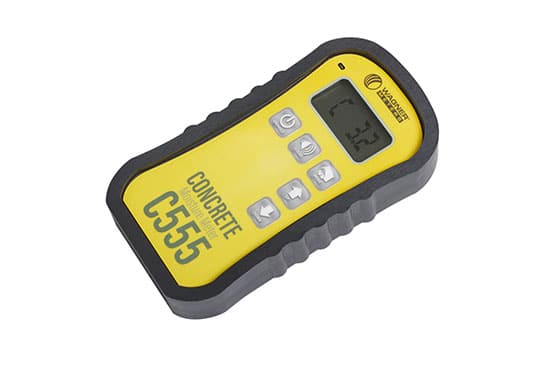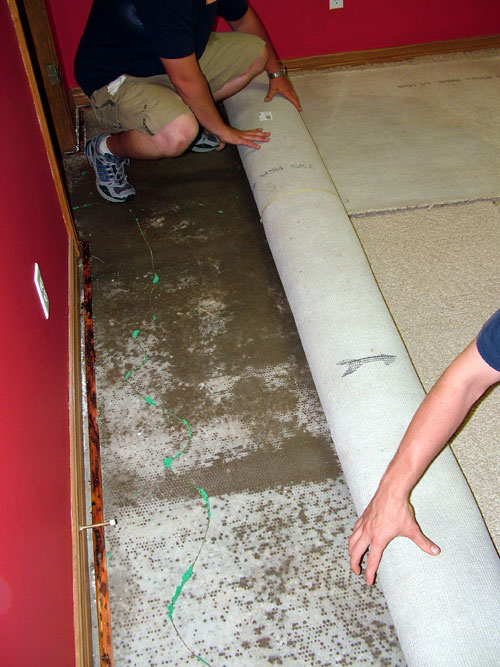How to Use a Concrete Moisture Meter for Residential Projects
 If you work in residential construction, a concrete moisture meter can help you find wet spots in the concrete flooring or subfloor of a location. They are quick, easy, and nondestructive.
If you work in residential construction, a concrete moisture meter can help you find wet spots in the concrete flooring or subfloor of a location. They are quick, easy, and nondestructive.
But with the wrong meter—or even the right meter used incorrectly—you could be setting yourself up for flooring failure in the future.
Here we’ll cover all the basics you need to know for buying and using a concrete moisture meter to successfully complete your residential projects.
You’ll learn:
- Concrete moisture meter buying basics
- How to properly use a concrete moisture meter
- The benefits of using a concrete moisture meter
- Why you should use a concrete moisture meter
Let’s dive in.
Concrete moisture meter buying basics
For starters, you’ll want to make sure that the concrete moisture meter is fully compliant with ASTM F2659.
ASTM, or the American Society for Testing and Materials, creates standards to guide professionals in a given industry.
In this case, ASTM F2659 states that a nondestructive electronic concrete moisture meter is useful for preliminary evaluation of the moisture condition of concrete and materials like gypsum cement.
Other things to consider are the different features that a concrete moisture meter can have.
Ideally, your concrete moisture meter will have a moisture reading range from 0% to 6.9% at the least. This is important because the reading range will influence whether or not your meter is useful.
You may also want a moisture meter that has a relative mode option so that you can take preliminary readings for other materials, not just concrete. Materials like brick, gypsum, and cement can all be preliminarily evaluated using a concrete moisture meter.
Lastly, a meter with on-demand calibration is important in terms of ease and reliability. An uncalibrated meter will not give reliable readings, and having to send a meter back to the manufacturer for calibration is a huge hassle.
Once you find a meter with these features, you’re good to start using it.
But how exactly do you do that?
Let’s find out!
How to use a concrete moisture meter
Using a concrete moisture meter is actually very simple.
Simply turn the meter on, place it on a clean surface—whether concrete or a similar material like brick, gypsum, or cement—and let the meter do the rest!
Repeat this process to scan all over the surface of the slab and identify problem spots and wet areas.
Now that you know the basics of buying and using a concrete moisture meter, let’s talk about some of the general benefits of using it.
What are the benefits of using a concrete moisture meter?

Because a concrete moisture meter is best used for preliminary evaluations of a slab’s moisture condition, it’s important to be able to check a large surface area quickly.
That’s why the benefits of using a concrete moisture meter can be summarized in two words: speed and breadth.
In terms of speed, a concrete moisture meter can quickly compare relative moisture levels at different locations in a concrete slab.
A concrete moisture meter, like the C555 from Wagner Meters, can also cover a lot of area while evaluating the moisture condition of the slab.
This breadth means that users can identify the wettest spots in the slab and make a game plan for further investigation. No need to unnecessarily drill all over the slab. Rather, only do further moisture testing, like placing an in situ RH sensor, in the places that need it most.
These are just a couple of the general benefits of using a concrete moisture meter. When we put it in the context of residential flooring jobs, we’ll see more reasons for its usefulness.
Why should you use a concrete moisture meter for residential flooring projects?
Using a concrete moisture meter in the residential market can be really helpful because it doesn’t require drilling into the existing floors.
When the flooring installer or retailer has to bid on flooring, none of the parties wants to incur the cost or effort of more in-depth moisture testing. But a proper bid still requires gathering some preliminary information.
This is where a moisture meter like the C555 comes in handy.
With a concrete moisture meter, you can provide an initial inspection of a homeowner’s floor with minimal effect.
If the homeowner has a carpet, all you have to do is pull back the corners and use a concrete moisture meter to see if there are inconsistencies in the slab’s moisture levels.
Once you’ve identified whether or not the slab has potential issues, you can provide the homeowner with a bid, write up a contract, and move forward with the job.
After receiving the bid, you would ideally pull back the rest of the carpet, evaluate the whole slab with the concrete moisture meter, and then place in situ probes in the hot spots. These probes provide an in-depth look at the slab’s moisture condition so you can determine a game plan for remediation.
However, for many residential projects, there is not enough time or financial resources to do further testing. The concrete moisture meter reading is valuable for helping the installer make appropriate decisions about moisture issues.
Make a concrete moisture meter part of your routine
At the end of the day, introducing a concrete moisture meter into your work routine, especially if you work in the residential sphere, can save you time, money, and hassle.
Get the flooring job, find the hotspots, and know exactly where to place your in situ probes—all with a quality concrete moisture meter. It’s definitely the tool you need.
If it sounds beneficial to you, check out the ASTM F2659-certified C555 concrete moisture meter from Wagner Meters.
Jason has 20+ years’ experience in sales and sales management in a spectrum of industries and has successfully launched a variety of products to the market, including the original Rapid RH® concrete moisture tests. He currently works with Wagner Meters as our Rapid RH® product sales manager.



